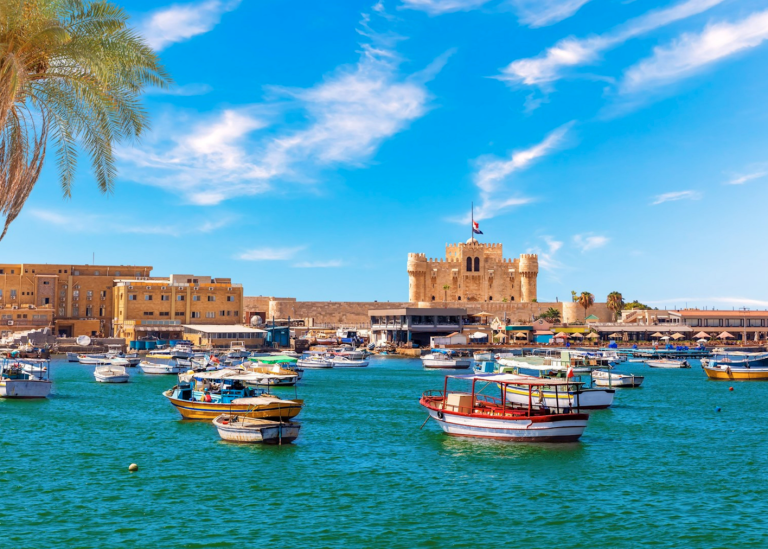Long before oil, skyscrapers, or air routes, it was the ports that defined the Arab world’s power and imagination. Across the Mediterranean and the Gulf, Arab coastal cities became the pulsing hearts of trade, culture, and exchange — places where goods, languages, and ideas converged long before the modern notion of globalization took form.
From Alexandria’s marble docks to Aden’s volcanic harbor, these cities were more than just commercial centers; they were living crossroads that connected continents and shaped civilizations.
Alexandria, Egypt
Founded in 331 BC by Alexander the Great, Alexandria quickly became one of the Mediterranean’s most powerful trade and cultural capitals. Its strategic position at the Nile Delta turned it into a natural meeting point for Africa, Asia, and Europe, where ships from across the ancient world exchanged grain, papyrus, wine, and ideas.
The Pharos Lighthouse guided sailors into what was once the busiest harbor of antiquity, while the Library of Alexandria stood as a symbol of knowledge and exchange, proving that commerce and culture could thrive side by side.
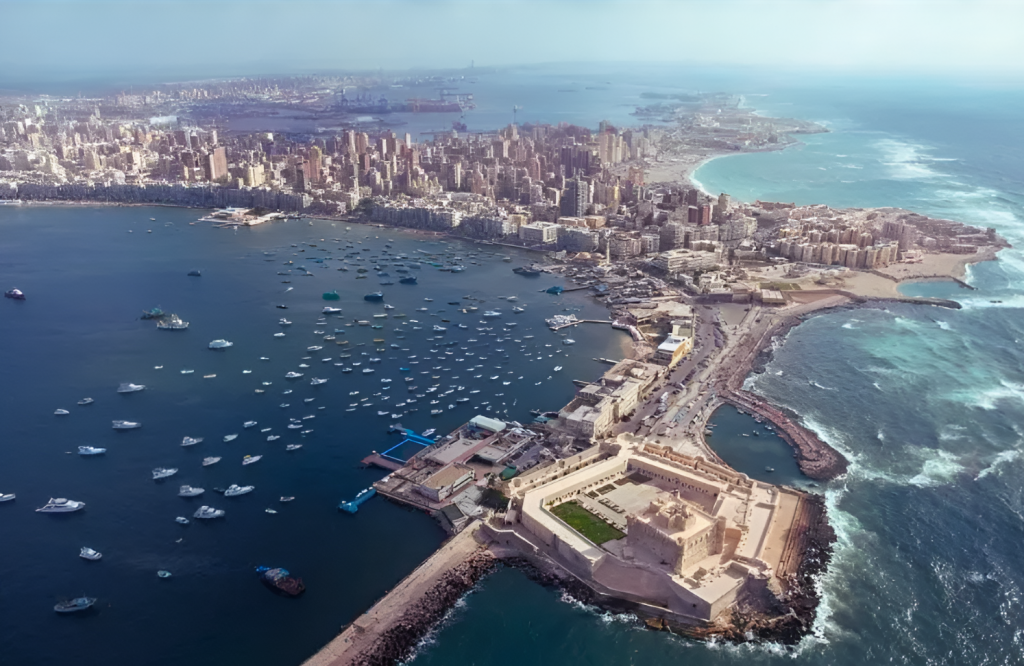
Tyre, Lebanon
Established around 2750 BC, Tyre was the crown jewel of the Phoenician world and the birthplace of maritime innovation. Its sailors and merchants dominated Mediterranean trade, exporting glass, cedarwood, and the legendary Tyrian purple dye that clothed kings and emperors.
Tyre’s influence stretched from the Levant to North Africa, where it helped found colonies like Carthage. For centuries, the city embodied the spirit of seafaring commerce that linked civilizations across the ancient sea.
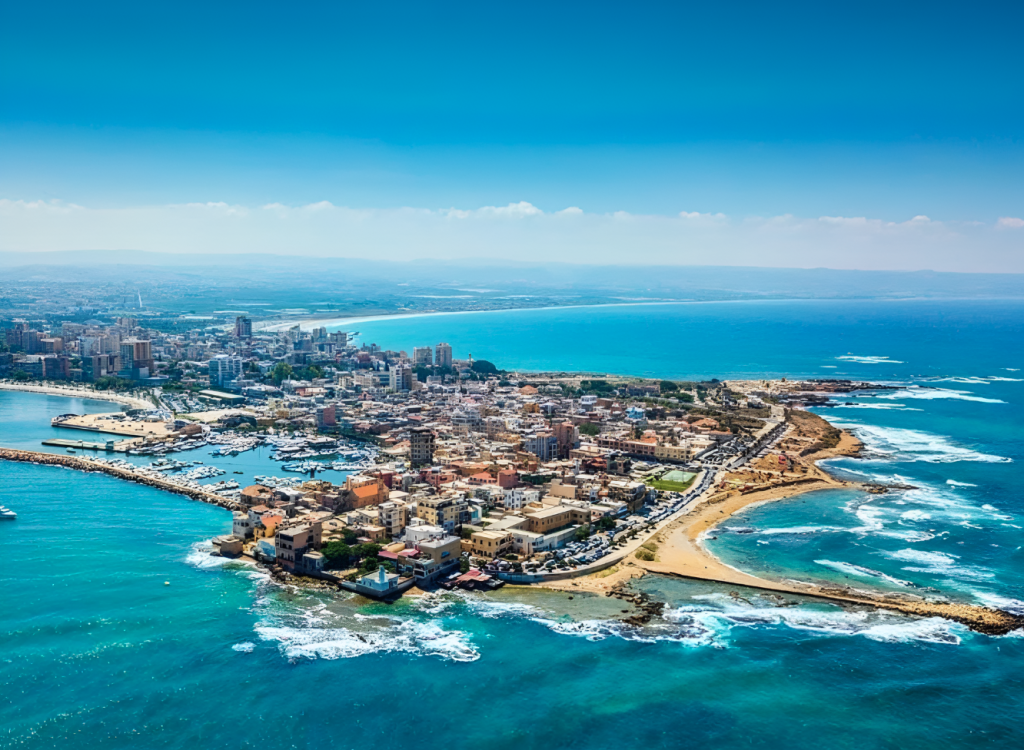
Carthage, Tunisia
Founded by Phoenician settlers from Tyre around 814 BC, Carthage grew into a commercial empire that rivaled Rome itself. Its position on the North African coast made it the perfect link between the Mediterranean’s eastern and western worlds. From here, Carthaginian merchants controlled the flow of metals, grain, and textiles, turning trade into power and power into legend. Even after its destruction, Carthage’s legacy as a symbol of maritime dominance lived on.
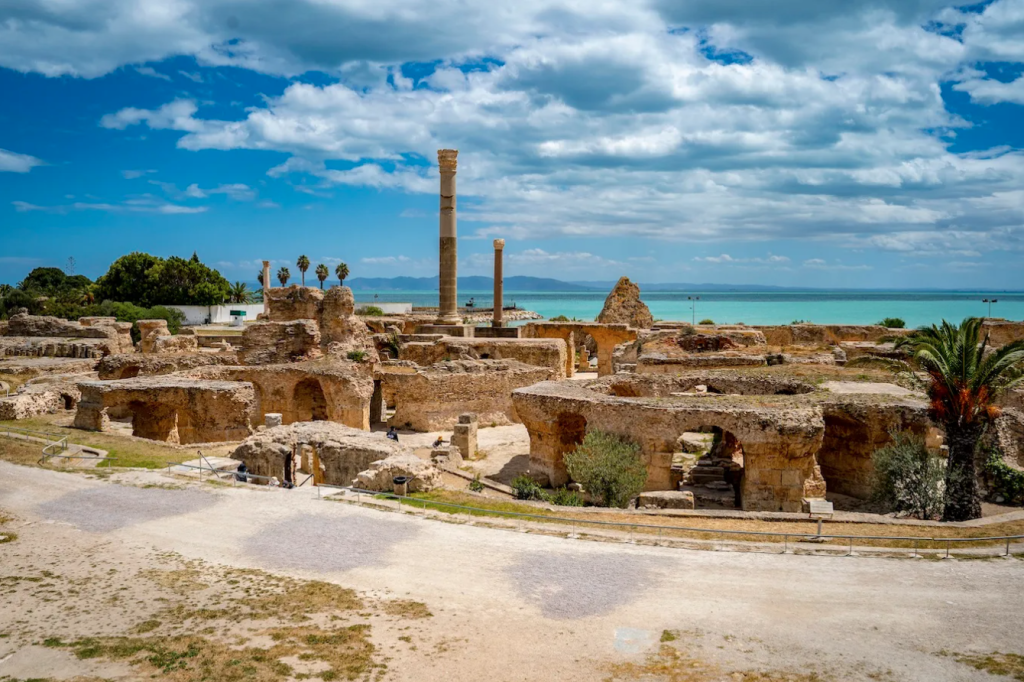
Qal’at al-Bahrain (Ancient Dilmun), Bahrain
Known in ancient texts as Dilmun, this island kingdom was one of the earliest trading crossroads between Mesopotamia and the Indus Valley, dating back to around 2300 BC. Archaeological discoveries reveal an advanced civilization that prospered through its control of the Gulf trade routes.
Copper, pearls, and dates were among the goods exchanged in its bustling harbor, making Bahrain one of the world’s earliest maritime centers and a vital bridge between continents.
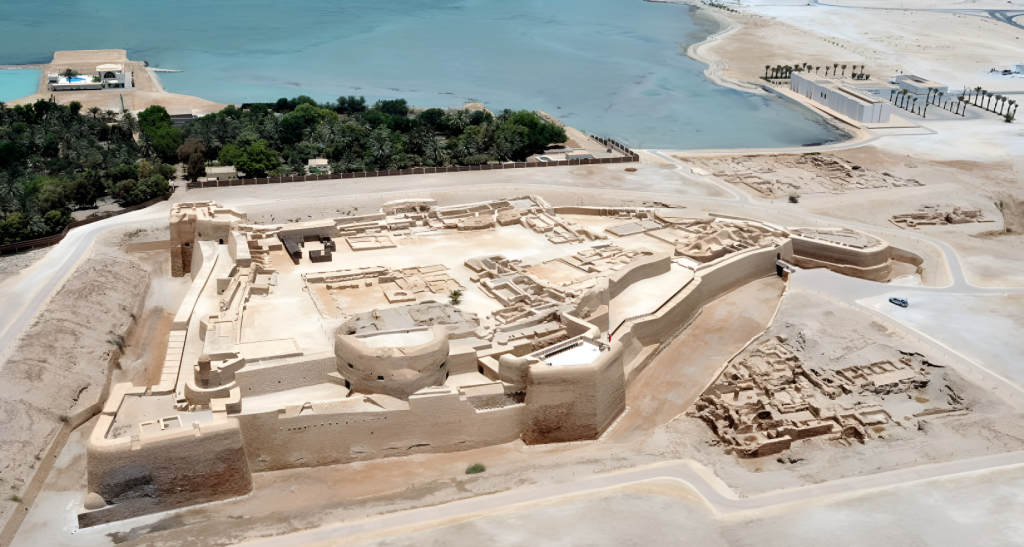
Aden, Yemen
Carved into a volcanic crater overlooking the Arabian Sea, Aden has for millennia served as a maritime gate between the Indian Ocean and the Red Sea. Its port was a vital stop for traders carrying spices, incense, and textiles between Asia, Africa, and the Mediterranean.
Under successive empires—from the Himyarites to the British—Aden remained a city defined by movement and exchange, where every wave brought a new language, a new good, and a new story.

Muscat, Oman
For centuries, Muscat stood at the crossroads of maritime routes linking Arabia, India, and East Africa. Its natural harbor, protected by rugged mountains, made it a safe haven for sailors and merchants. The city exported frankincense, copper, and dates while importing spices and silks from the east. Muscat’s seafaring legacy gave Oman its identity as a nation of navigators and traders whose influence reached far beyond the Arabian Peninsula.

Tangier, Morocco
Situated where the Atlantic Ocean meets the Mediterranean, Tangier has always been a city of passage and convergence. From Phoenician traders to Arab dynasties and European powers, each left its imprint on a city that has linked Africa to the wider world for over two millennia. Its harbors carried gold, spices, and textiles, but also stories, art, and diplomacy, making Tangier not just a trade hub but a living archive of exchange and encounter.
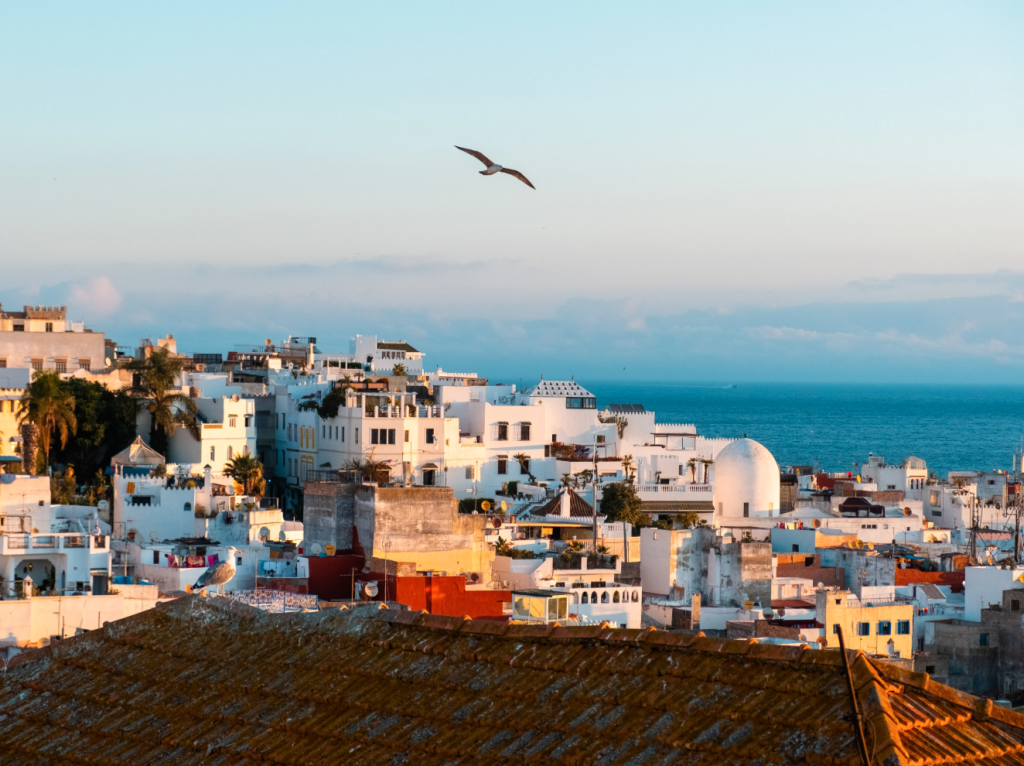
In revisiting these ports, we’re not just looking back at the origins of commerce, but at the foundation of cultural exchange that continues to define the Arab world’s spirit today.
WE ALSO SAID THIS: Don’t Miss… 5 Scenic Hiking Routes Across the MENA Region


